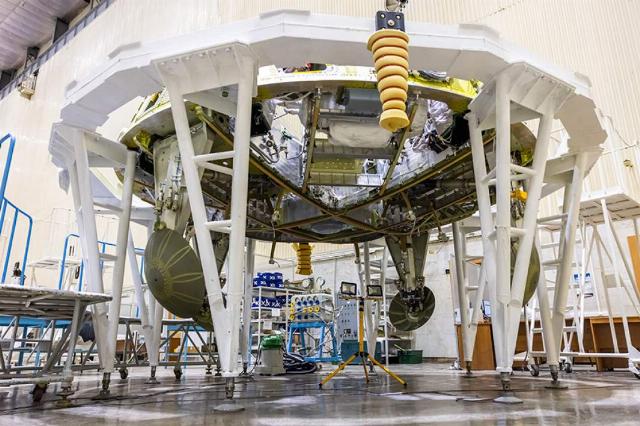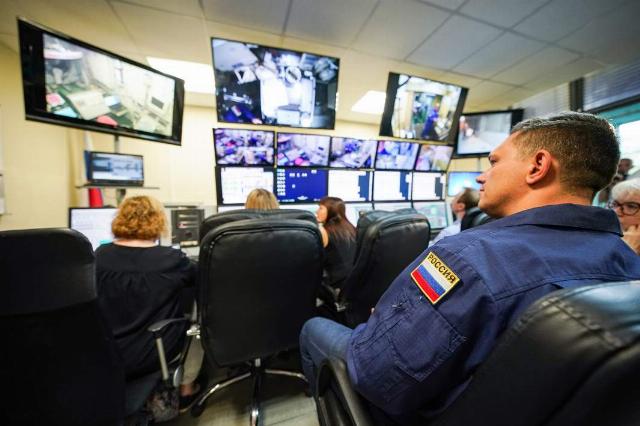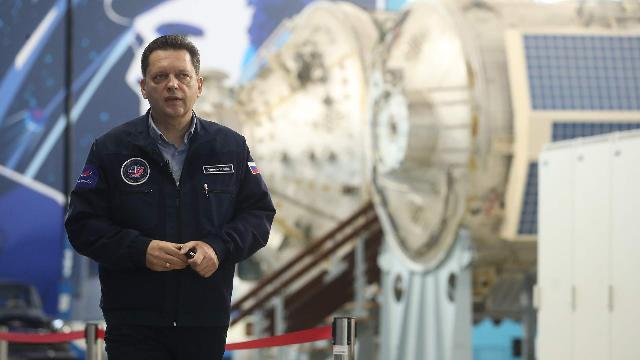Maxim Kharlamov, Head of the Yuri Gagarin Space Center, on the training of crews and robots for orbital and long—range flights
The teledroid robot is undergoing training at the Yuri Gagarin Cosmonaut Training Center. Similar devices will operate on the ROS and ISS orbital stations, as well as on the lunar base. Maxim Kharlamov, the head of the center, told Izvestia about this. The meeting with him took place on the eve of the 65th anniversary of the organization. The head also informed about the creation of simulator analogues of the Russian promising new generation spacecraft. They will practice orbital missions and flights to the moon.
"We are creating funds to prepare astronauts for expeditions on a new generation Russian spacecraft"
— Maxim Mikhailovich, what innovations are being introduced into the cosmonaut training process?
— I must say that the most effective approach in preparing for space flights is individual work, when the instructor and the astronaut interact with each other face to face. This tradition was laid down during the preparation of the first squad and remains unchanged to this day. At the same time, the methods are constantly being improved.
On the other hand, the CPC lives by the same tasks as the entire space industry. Therefore, the projects of the Roscosmos state Corporation in the field of manned flights are certainly becoming our tasks. We are currently actively working on the creation of facilities for preparing astronauts for expeditions on the new generation Russian spacecraft and the Russian Orbital Station (ROS).
Izvestia reference
The Cosmonaut Training Center (CPC) was established on January 11, 1960, and its tasks included training astronauts for manned flights. The organization was located in a forest near a military airfield. The settlement was named the Green Town. Now it is known all over the world as the Star City. Over the years of the CPC's existence, its specialists have developed unique techniques, training materials, simulator systems and other training complexes for preparing people for space flights.
— Please tell us about these projects.
— Currently, the Center is assembling a comprehensive PTK simulator (manned transport ship). In fact, it is a terrestrial analogue of a spacecraft. In total, at least three similar training complexes will be built. On the simulator, astronauts will practice orbital missions to Mars and expeditions to the Moon.
Since the PTK is a fundamentally new ship, the filling of the simulator is completely innovative. It is equipped with systems that were not present on previous versions. The new equipment will allow you to simulate more flight modes and emergency situations. This will help to better prepare the crews for the upcoming missions.

Photo: Roscosmos Media/TASS/Timoshenko, Ivan
For example, the new simulator will have the ability to change the pressure in the suit, which will simulate its depressurization. Another innovation is that this training complex can change the tilt of the astronauts' seats by 30 degrees. This will make it possible to create comfortable conditions during training.
— When will training begin on the new simulator?
— The simulator is assembled from autonomous parts. A control and monitoring panel has now been installed and equipped, the workplace of the crew doctor has been equipped, communication systems, power supply and others have been implemented. In the summer, the first classes will begin on the simulator. They will include studying the ship's design and working with the equipment. Cosmonauts will begin training for manned flights on PTK simulators in 2027.
We are also cooperating with RSC Energia, the parent organization for the creation of the Russian space station ROS. The corporation's specialists have already supplied the equipment for the groundwork for the first training complex.
Also, as part of the new project, the CPC is testing a new robotic stand, an analog of a teledroid robot.
"Robots will be used to perform operations on the Russian Federation and the lunar base"
— What tasks will this teledroid perform in the future?
— This is an anthropomorphic robot that is designed to work in space conditions. It will function both in automatic mode and with the help of remote control (when the robot repeats the movements of a human). Visual and audio information about the situation in the robot's work area will also be transmitted to the operator in a virtual reality helmet or control panel.
An industrial sample of the first anthropomorphic robot of the new generation "Teledroid" corporation "Roscosmos"
Image source: Photo: Roscosmos State Corporation Press Service/TASS
The robots will be used to perform operations on the Russian Federation and the lunar base, as well as in outer space during extravehicular activities. They will assist astronauts in performing various tasks and conducting experiments. In the future, teledroids will be able to partially replace crews during their absence. It will also be possible to control the actions of robots remotely — from the Mission Control Center.
— Is there a risk that robots will replace humans in space?
— In general, we adhere to the concept that robots should be assistants, not substitutes for astronauts. The machines will be able to take over the most time-consuming and routine operations. In the future, when the level of artificial intelligence increases, robots will be able to provide higher-level support. Then they will become, in a sense, partners of people.
The product that is currently being tested also has elements of artificial intelligence. In particular, after receiving the command, the teledroid will be able to plan the order of the operation in order to perform it. For example, he will find and press the right button on his own.
However, when the robot operates in remote control mode, it will be able to learn new skills from humans by memorizing operations that it has not done before. In the future, he will be able to complete them on his own.
— When will the teledroid fly into space?
— It is expected that flight tests of the device will take place this year. He will go to the Russian segment of the ISS. Previously, the robot "Fedora" was tested there. By the way, the results of past experiments are taken into account in the new product.
In particular, cosmonaut Alexander Skvortsov, working with Fedor in orbit, reported that he was hampered by the lack of a sense of effort when he used remote control to command the robot to pick up an object. This has been fixed, and now, when touching objects, the operator feels vibrations on his palms and fingers.

Photo: IZVESTIA/Sergey Lantyukhov
Also, on the recommendation of cosmonauts Anna Kikina and Dmitry Petelin, who tested the teledroid in the CPC, a rear-view camera was added to it. This increased the viewing area and improved the controllability of the device.
"Russian is used as an operational language on Russian spacecraft"
— Will the CPC train space tourists?
— The programs for preparing for such flights have been worked out. We work closely with Glavkosmos, a company that, on behalf of Roscosmos, negotiates with potential tourists who intend to travel on a Russian spacecraft and visit the ISS or the ROS station.
This includes international partners. If the contacts are successful, we are ready to receive such groups to prepare for flights.
— How long will the training of non-professional astronauts last?
— The preparation time will depend on the objectives of the specific mission. In addition to physical training, a minimum of safety and a basic set of operations, tourists will also work out experiments on Earth that they plan to perform in orbit. In addition, they need to learn Russian at a certain level. Russian is used as an operational language on Russian spacecraft and orbital stations.
Andrey Korshunov

